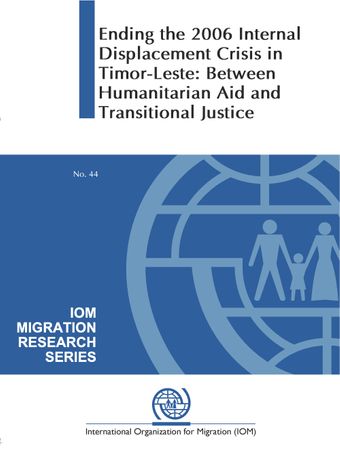Executive summary

- Author: Peter Van der Auweraert
- Main Title: Ending the 2006 Internal Displacement Crisis in Timor-Leste , pp 7-7
- Publication Date: December 2012
- DOI: https://doi.org/10.18356/b4cdf492-en
- Language: English
The 2006 crisis in Timor-Leste saw close to 15 per cent of the population displaced from their homes, threatening to sink the country into protracted instability and violence. Remarkably, less than five years later, the country looks to be back on track, with the internal displacement file largely resolved. This study looks at the National Recovery Strategy (NRS) adopted by the government to resolve internal displacement in Timor-Leste, from the viewpoint of a participant in the policy development and implementation process. Particular attention will be paid to the cash grant component of the NRS, as well as the accompanying dialogue processes. After discussing the move towards a cash grant-based programme and looking at some of the implementation challenges the government faced, this study will try to ascertain whether or not the NRS can be qualified as a full-fledged reparations effort. It concludes that while the NRS had some important characteristics that are usually associated with (administrative) reparations programmes, including a clear reparative effect for a defined category of victims, a number of factors stand in the way of wholeheartedly qualifying it as a reparations effort. Nevertheless, the experience of Timor-Leste contains a number of important lessons for reparations efforts in respect of displaced populations elsewhere, which will be highlighted in the conclusion.
© United Nations
ISBN (PDF):
9789210559188
Book DOI:
https://doi.org/10.18356/2891f2fb-en
Related Subject(s):
Migration
Sustainable Development Goals:
Countries:
Timor-Leste
-
From This Site
/content/books/9789210559188c002dcterms_title,dcterms_subject,pub_keyword-contentType:Journal -contentType:Contributor -contentType:Concept -contentType:Institution105
/content/books/9789210559188c002
dcterms_title,dcterms_subject,pub_keyword
-contentType:Journal -contentType:Contributor -contentType:Concept -contentType:Institution
10
5

